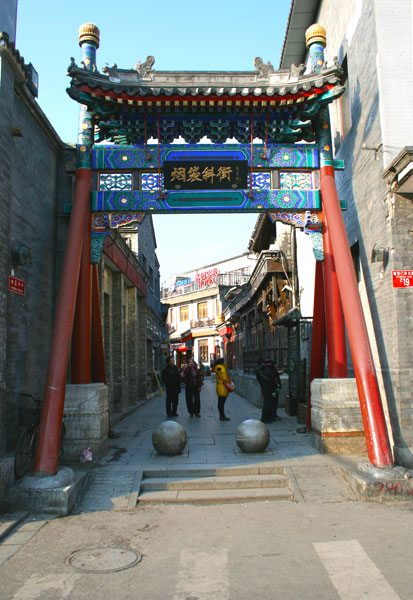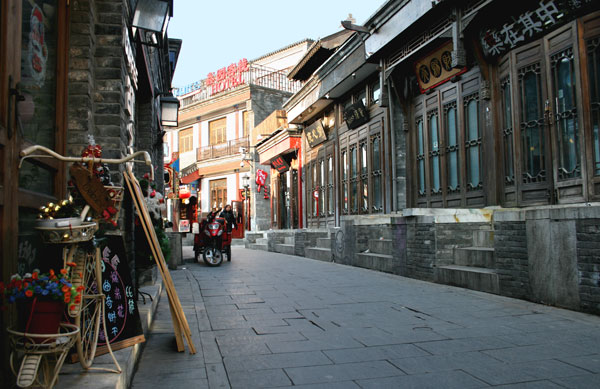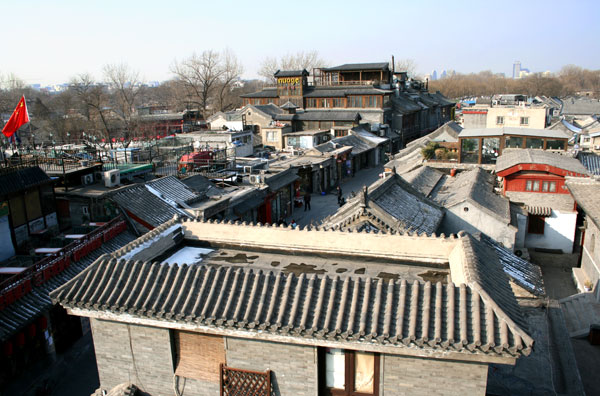

 |
|
The entrance of Yandaixie Street [Photo/CRIENGLISH.com] |
Yandaixie Street, literally meaning "Skewed Tobacco Pouch Street", is located in the north of Xicheng district. The 232-meter-long street starts from Di'anmen Avenue in the east and ends at Shichahai Lake in the west.
The street originally got its name due to its shape, which resembles a huge tobacco pouch. During the Qing Dynasty (1644-1911), many tobacco stores opened there. Today, visitors wandering along the street still can find many stores selling tobacco pouches, antiques and all kinds of souvenirs.
The centuries-old hutong has been developed and redeveloped, and today new stores come and go.
One employee from the Litong Antique Store has seen more changes than he can remember. "Now it's better than it was before 2007," he says, while shuffling around the cramped room. "Now it's more orderly. In the past it was really unsanitary here, and the facilities weren't very good. All the power wires have been placed underground. It's tidier. Also the architecture has been restored to what it used to be like in the Qing Dynasty."
He notes that his store which sells antiques and traditional goods is now a clear minority in the hutong. "Young people like new things, but different people have different tastes. People are from different cultural backgrounds. It's impossible for everyone here to sell old things. Or new things. People from different social classes are all interested in this hutong because it represents Beijing culture."
In Yandaixie Street, reproductions of original buildings may be criticized by some, but at least they exist next to remnants of authentic history. Businesses such as a post office and a meat skewer restaurant have remained in operation since the Qing Dynasty.
Beijinger Meng was browsing the hutong with her boyfriend, en route to go skating on Houhai Lake. "This place is rich with Chinese character," she begins. "We used to come whenever we had free time. We would send off postcards from the post office, and also buy some small things." Although Meng does enjoy the commercial aspects of the hutong, they are not the reason she goes there. "Young people come here to experience the feeling of the past."
But it is people of all ages who visit Yandaixie Street every day of the year. In summer days and nights, the hutong is a tourist hotspot, and people from across China and the world squeeze in for a taste of Beijing tradition. For those who prefer to avoid crowds, this Spring Festival is an ideal time to explore the hutongs, nooks and crannies. Most stores will remain open throughout the holiday.
Travel tips:
Surrounding attractions: Drum Tower, former residence of Guo Moruo
Getting there: Bus 5, 60, 82, 107, 124 to Gulou.
 |
|
A quiet moment at Yandaixie Street. [Photo/CRIENGLISH.com] |
 |
|
Yandaixie Street from above, surrounded by tile roofs.[Photo/CRIENGLISH.com] |
 |
|
Skewered meat, has been sold on Yandaixie Street since the Qing Dynasty.[Photo/CRIENGLISH.com] |